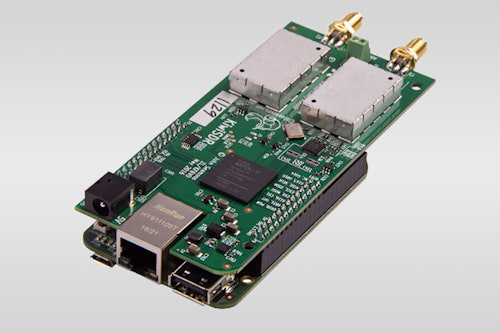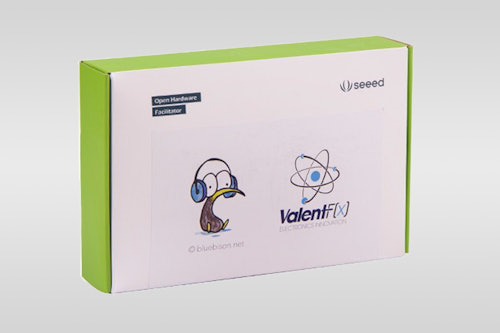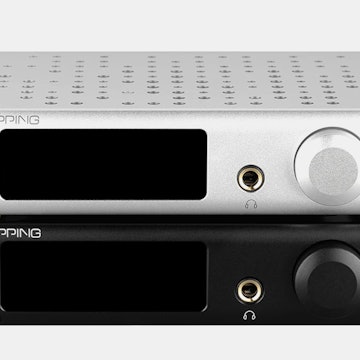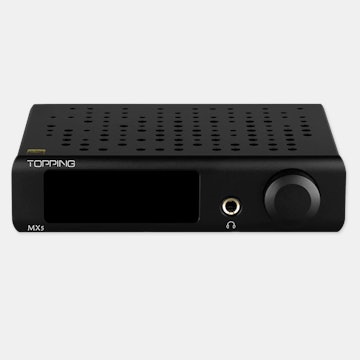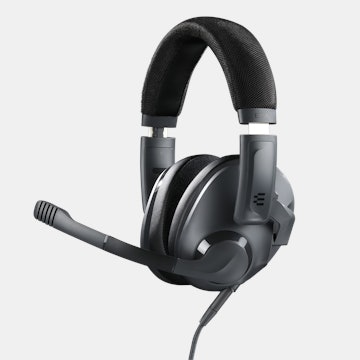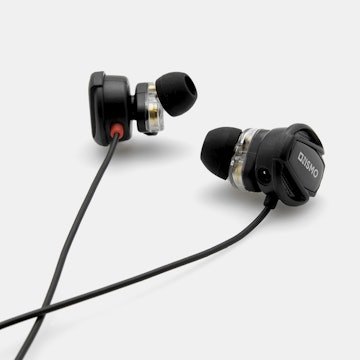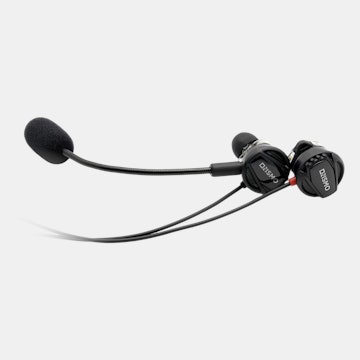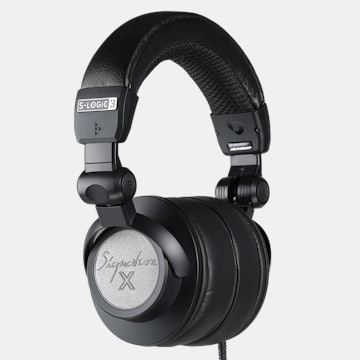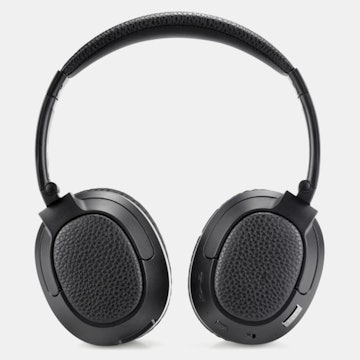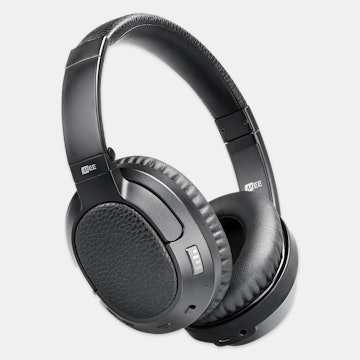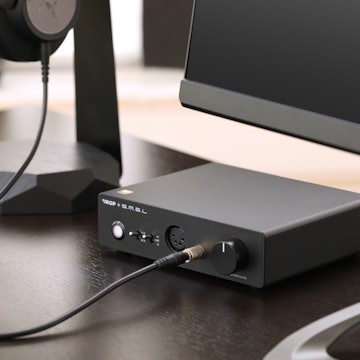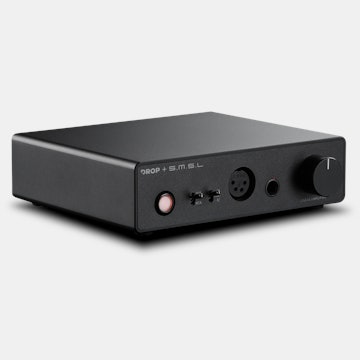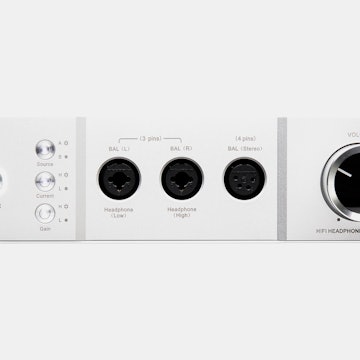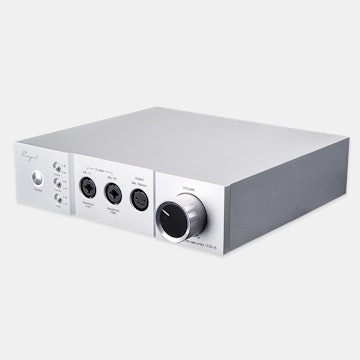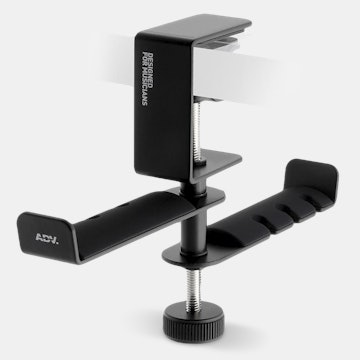Click to view our Accessibility Statement or contact us with accessibility-related questions





















Seeed KiwiSDR Kit 2
Seeed KiwiSDR Kit 2
bookmark_border
Where's the price?
To negotiate the best possible price for our customers, we agree to hide prices prior to logging in.
1.2K requests
Product Description
KiwiSDR is a software-defined radio that covers shortwave and longwave signals, AM broadcast bands, utility stations, and amateur radio transmissions in the spectrum from 10 kHz to 30 MHz. It features a custom circuit board that connects to the Beaglebone Green or Beaglebone Black—all you need to supply is an antenna (included), power supply, and network connection and you can listen from anywhere in the world Read More

search
close
Sort by: Top Conversations
keyboard_arrow_down
flyinglotus1983
358
Dec 27, 2016
I managed to pick one of these up from Seeed Studio before they went out of stock. Here's my comments on it, after a week or two with it:
- The web interface is pretty slick, but that's all you get. No API at the moment, no way to channel raw IQ data anywhere. - There is no hardware gain control, for cost reasons. The frontend can and will overload if you're close to even a single AM broadcast station. And you'll have no choice but to either attenuate the entire signal (not very desirable!), build a selective antenna, or build a notch filter to attenuate just that band. You're on your own if you need to build a filter, it's not documented anywhere on the site, however you'll find a link buried in the support forum. - 12 bit Analog-to-digital converter is MUCH better than the 8-bit ADC's found on RTL-SDR dongles. 16 would be even better, the 12-bit does present a problem when overloaded with broadcast stations. Without a hardware gain control, the entire board is useless, if that overloading signal creates intermod. - The KiwiSDR includes a software GPS that's used for disciplining the main oscillator. Clever! you'd think, because GPS time sources are exceptionally accurate, being that they all have Cesium and Rubidium atomic clocks. He remarks that the GPS frontend was basically free it was so cheap. My problem with this is that his software GPS approach (of demodulating and decoding the GPS navigation data) is not 'free'. The BeagleBone is spending a massive amount of time chewing through that data, as is the FPGA. This isn't nearly as efficient as a dedicated GPS chip would be, nor as simple as a TCXO or other precision clock source. There's no room left for modification, and bandwidth is limited between the FPGA and the BBB because of the software GPS. It's VERY clever, but I'm going to disable mine and make some modifications to the hardware, which will give me more CPU and bandwidth to play with. - The bandwidth is actually pretty deceiving. Yes it will receive 0-30 MHz, but not all at once. It can generate a waterfall across 0-30, but when it actually decodes a signal, it's only using a few KHz of bandwidth, and can only decode a few channels. It's clever, but in reality, it's got less real-time bandwidth than an RTL-SDR dongle. But because it has a full bandwidth waterfall (unlike the RTL-SDR), you won't care. As I mentioned above, more bandwidth is theoretically possible, but would take some work / modification. - The Active MiniWhip type antennas are highly recommended for this or any other high bandwidth SDR. Rather than being resonant at one frequency, they pick up everything. They're small, cheap, and can be placed anywhere outside. Just make sure to install a ground rod at least 8 feet deep and ground it. Otherwise it's useless. You can pick up kits or fully built active MiniWhip antennas on eBay. Mine shipped from Ukraine and costed me $18.00 USD. I had to fabricate an enclosure for the antenna and an enclosure for the power splitter, which probably ran another $20.00. A ground rod will be another $15.00 or more. All in all though, these will actually perform better than a dipole or vertical. It's hard to beat a dipole, but the Active MiniWhip does, hands down. Here's an example of one if you don't believe me: http://websdr.ewi.utwente.nl:8901/ - SDRplay is a better deal all around. Higher bandwidth (1 kHz to 2 GHz vs KiwiSDR's 0-30 MHz). Larger playback bandwidth (10 MHz vs a few KHz x 4), 8 built-in selectable filters which can block out broadcast stations that would otherwise overload the frontend. Sixteen receive channels vs 4. Includes two separate antennas, one of which has a power source for an LNA. Has a hardware RF gain conrol (KiwiSDR does not). Supports more SDR applications and includes an API. MUCH cheaper, at under $200. - That being said, KiwiSDR is fully open source, which has my full respect. I think the creator needs to take a hard look at SDRPlay and implement some of those features. Or hell, maybe I'll fork it and modify it if he won't. I don't buy the 'low cost' argument because somehow the SDRplays are cheaper.
- The web interface is pretty slick, but that's all you get. No API at the moment, no way to channel raw IQ data anywhere. - There is no hardware gain control, for cost reasons. The frontend can and will overload if you're close to even a single AM broadcast station. And you'll have no choice but to either attenuate the entire signal (not very desirable!), build a selective antenna, or build a notch filter to attenuate just that band. You're on your own if you need to build a filter, it's not documented anywhere on the site, however you'll find a link buried in the support forum. - 12 bit Analog-to-digital converter is MUCH better than the 8-bit ADC's found on RTL-SDR dongles. 16 would be even better, the 12-bit does present a problem when overloaded with broadcast stations. Without a hardware gain control, the entire board is useless, if that overloading signal creates intermod. - The KiwiSDR includes a software GPS that's used for disciplining the main oscillator. Clever! you'd think, because GPS time sources are exceptionally accurate, being that they all have Cesium and Rubidium atomic clocks. He remarks that the GPS frontend was basically free it was so cheap. My problem with this is that his software GPS approach (of demodulating and decoding the GPS navigation data) is not 'free'. The BeagleBone is spending a massive amount of time chewing through that data, as is the FPGA. This isn't nearly as efficient as a dedicated GPS chip would be, nor as simple as a TCXO or other precision clock source. There's no room left for modification, and bandwidth is limited between the FPGA and the BBB because of the software GPS. It's VERY clever, but I'm going to disable mine and make some modifications to the hardware, which will give me more CPU and bandwidth to play with. - The bandwidth is actually pretty deceiving. Yes it will receive 0-30 MHz, but not all at once. It can generate a waterfall across 0-30, but when it actually decodes a signal, it's only using a few KHz of bandwidth, and can only decode a few channels. It's clever, but in reality, it's got less real-time bandwidth than an RTL-SDR dongle. But because it has a full bandwidth waterfall (unlike the RTL-SDR), you won't care. As I mentioned above, more bandwidth is theoretically possible, but would take some work / modification. - The Active MiniWhip type antennas are highly recommended for this or any other high bandwidth SDR. Rather than being resonant at one frequency, they pick up everything. They're small, cheap, and can be placed anywhere outside. Just make sure to install a ground rod at least 8 feet deep and ground it. Otherwise it's useless. You can pick up kits or fully built active MiniWhip antennas on eBay. Mine shipped from Ukraine and costed me $18.00 USD. I had to fabricate an enclosure for the antenna and an enclosure for the power splitter, which probably ran another $20.00. A ground rod will be another $15.00 or more. All in all though, these will actually perform better than a dipole or vertical. It's hard to beat a dipole, but the Active MiniWhip does, hands down. Here's an example of one if you don't believe me: http://websdr.ewi.utwente.nl:8901/ - SDRplay is a better deal all around. Higher bandwidth (1 kHz to 2 GHz vs KiwiSDR's 0-30 MHz). Larger playback bandwidth (10 MHz vs a few KHz x 4), 8 built-in selectable filters which can block out broadcast stations that would otherwise overload the frontend. Sixteen receive channels vs 4. Includes two separate antennas, one of which has a power source for an LNA. Has a hardware RF gain conrol (KiwiSDR does not). Supports more SDR applications and includes an API. MUCH cheaper, at under $200. - That being said, KiwiSDR is fully open source, which has my full respect. I think the creator needs to take a hard look at SDRPlay and implement some of those features. Or hell, maybe I'll fork it and modify it if he won't. I don't buy the 'low cost' argument because somehow the SDRplays are cheaper.

KiwiSDR
32
KiwiSDR
Dec 21, 2017
ExplodingLemurThe software-defined GPS is designed not to impact the SDR much. And it doesn't. You can compile a version of the system with it completely removed from the server and FPGA if you really want to. Heck, I've had some people buy the Kiwi *only* because of the SD-GPS. They couldn't care less about the SDR. They want to tinker with the internals of a real GPS receiver.
The Kiwi is still NOT an "IQ generator" like the RSP2 and most other USB-output style SDRs. That was the entire point of the project. But a lot has changed since flyinglotus' comments nearly a year ago.
There is now an external control API and IQ output, although only at the current 12 kHz "audio" bandwidth. See the "kiwiclient" project on Github for Python code that talks to a Kiwi and can save IQ data to a file. And people are using virtual audio cable (VAC) programs to link Kiwi IQ output to DRM and C-QUAM AM stereo decoders and other external IQ processing programs.
The latest development is that GPS timestamped IQ samples are being used to do crowd-sourced VLF/LF and HF direction finding. See: http://hcab14.blogspot.com and https://github.com/jks-prv/Beagle_SDR_GPS/issues/130 It's early days but this is a very exciting development. And I'm quietly chuckling at all the people that called me an idiot for spending the additional $8 to put an SD-GPS on the board in the first place.
TDoA location solution for German time station DCF77, 77.5 kHz using GPS timestamped IQ data from three cooperating KiwiSDRs. by Christoph Mayer hcab14.blogspot.com
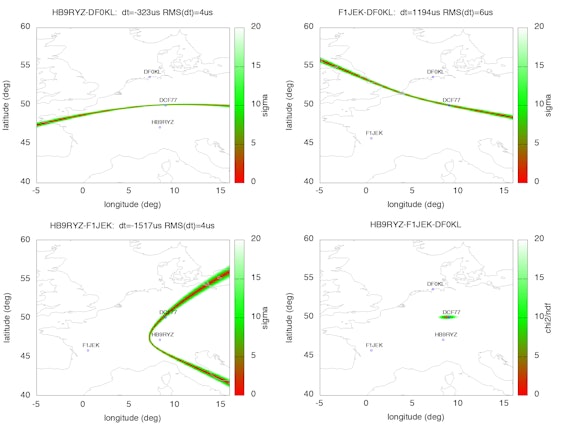
The Kiwi is still NOT an "IQ generator" like the RSP2 and most other USB-output style SDRs. That was the entire point of the project. But a lot has changed since flyinglotus' comments nearly a year ago.
There is now an external control API and IQ output, although only at the current 12 kHz "audio" bandwidth. See the "kiwiclient" project on Github for Python code that talks to a Kiwi and can save IQ data to a file. And people are using virtual audio cable (VAC) programs to link Kiwi IQ output to DRM and C-QUAM AM stereo decoders and other external IQ processing programs.
The latest development is that GPS timestamped IQ samples are being used to do crowd-sourced VLF/LF and HF direction finding. See: http://hcab14.blogspot.com and https://github.com/jks-prv/Beagle_SDR_GPS/issues/130 It's early days but this is a very exciting development. And I'm quietly chuckling at all the people that called me an idiot for spending the additional $8 to put an SD-GPS on the board in the first place.
TDoA location solution for German time station DCF77, 77.5 kHz using GPS timestamped IQ data from three cooperating KiwiSDRs. by Christoph Mayer hcab14.blogspot.com


KiwiSDR
32
KiwiSDR
Apr 4, 2017
KiwiSDR designer here. Thanks Massdrop for offering people a great price. Always nice to see a little capitalism in action (although everyone seems to be making money except me, lol). Happy to answer any questions. Also, please check the "wall of text" at kiwisdr.com and forum at http://valentfx.com/forums/#/categories/kiwisdr-discussion
Regards, John, ZL/KF6VO
Regards, John, ZL/KF6VO
shaneshort
0
May 18, 2017
I'm interested in using this unit for ADS-B. Do you know if it'll support tagging incoming frames with the GPS timestamp for MLAT?

KiwiSDR
32
KiwiSDR
May 18, 2017
shaneshortI don't know much about ADS-B, but doesn't it operate at 1090 MHz or something? The Kiwi is a "shortwave" SDR with a top frequency of 30 MHz (32 with degraded performance). You could use a downconverter I suppose. But aren't there already complete solutions using an inexpensive RTL-SDR plus a Beagle or R-Pi? I'm not sure what advantage a Kiwi would have for ADS-B.
[edit] I should add that there have been requests for high-resolution tagging of the mono audio stream data and (future) IQ output stream with GPS timestamps. Presumably for use by downstream applications. Applications typically use a program that listens to the audio output of the browser via a "virtual audio cable" adapter of some sort. It is also possible to write "extensions" for KiwiSDR where you can load a small program into the server and/or browser to do custom processing (existing ones are under the "extensions" menu in the user interface). The complete list of all Kiwi bugs and wishes is here: http://kiwisdr.com/bugs/
[edit] I should add that there have been requests for high-resolution tagging of the mono audio stream data and (future) IQ output stream with GPS timestamps. Presumably for use by downstream applications. Applications typically use a program that listens to the audio output of the browser via a "virtual audio cable" adapter of some sort. It is also possible to write "extensions" for KiwiSDR where you can load a small program into the server and/or browser to do custom processing (existing ones are under the "extensions" menu in the user interface). The complete list of all Kiwi bugs and wishes is here: http://kiwisdr.com/bugs/

flyinglotus1983
358
Apr 3, 2017
Oh, if anyone's interested .. I designed an enclosure for the KiwiSDR, with endcaps that can be 3D printed. it utilizes a Hammond 1455 series aluminum extruded case.
If anyone wants the STL files, let me know .. I'll publish them to github or something.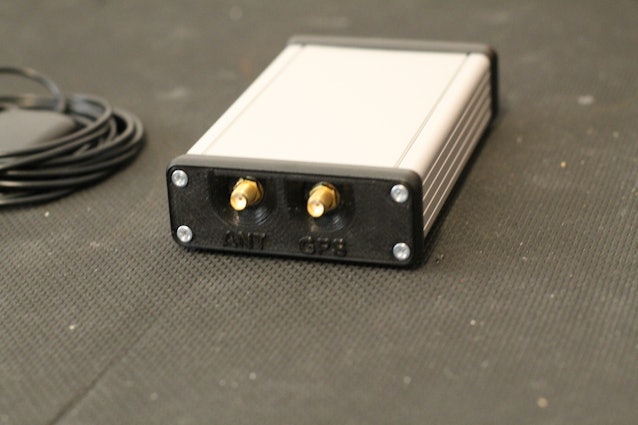
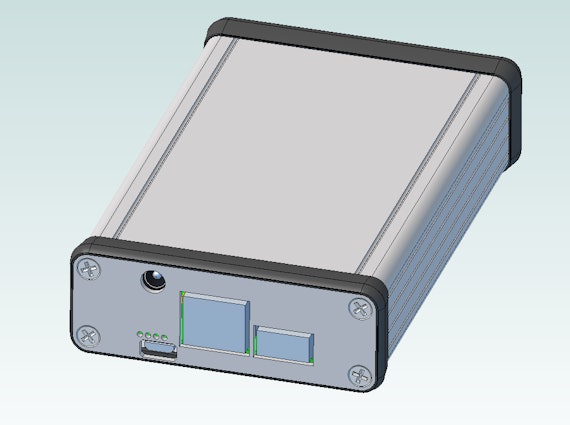
If anyone wants the STL files, let me know .. I'll publish them to github or something.



KiwiSDR
32
KiwiSDR
Apr 4, 2017
Hi FL. Great work. I saw your original upload of this to tinkercad.com I've also been prototyping with the 1455. Seeed is working on a metal enclosure but I don't know what the schedule is.
I had best reduction of RFI/EMI by grounding the Beagle to the case via metal standoffs. Consider using star washers to help guarantee electrical connection. Note that the standoff near the Beagle SD card slot needs to be non-conductive nylon because otherwise one of the SD traces/pads might get shorted to ground by the 4.5mm width of the typical standoff. I had much worse SDR noise by grounding the antenna SMAs to the case. Just drill some large (~ 14mm diameter) holes in the end plates and leave the connectors floating. The other reason to do this is because those SMA connectors don't have a lot of mechanical bonding strength to the Kiwi PCB. So you may not want to put possible stress on them by a rigid attachment to the case.
I found that the nice looking anodized finish of these enclosures is actually non-conductive and you may want to grind it off at the mating surfaces for best performance (a good task for that old Dremel tool you got for Xmas 15 years ago and never use).
The final thing I did was add one of those tiny, quiet 3.3V fans inside. You can terminate the fan leads in a Grove compatible connector and plug it right into the BeagleBone Green. Remember that there is 5V at > 1A going into the Kiwi, so that's about 5 watts into a closed box. Not a great thermal situation. Be sure to add some additional airflow slots to the end plates.
I had best reduction of RFI/EMI by grounding the Beagle to the case via metal standoffs. Consider using star washers to help guarantee electrical connection. Note that the standoff near the Beagle SD card slot needs to be non-conductive nylon because otherwise one of the SD traces/pads might get shorted to ground by the 4.5mm width of the typical standoff. I had much worse SDR noise by grounding the antenna SMAs to the case. Just drill some large (~ 14mm diameter) holes in the end plates and leave the connectors floating. The other reason to do this is because those SMA connectors don't have a lot of mechanical bonding strength to the Kiwi PCB. So you may not want to put possible stress on them by a rigid attachment to the case.
I found that the nice looking anodized finish of these enclosures is actually non-conductive and you may want to grind it off at the mating surfaces for best performance (a good task for that old Dremel tool you got for Xmas 15 years ago and never use).
The final thing I did was add one of those tiny, quiet 3.3V fans inside. You can terminate the fan leads in a Grove compatible connector and plug it right into the BeagleBone Green. Remember that there is 5V at > 1A going into the Kiwi, so that's about 5 watts into a closed box. Not a great thermal situation. Be sure to add some additional airflow slots to the end plates.

flyinglotus1983
358
Apr 7, 2017
KiwiSDRI didn't upload anything to tinkercad. If you saw the same exact case design on there, it was probably the guy that I sold my KiwiSDR and enclosure to.
janome
16
Oct 6, 2017
why by this instead of a hackrf one? i am being serious. pros cons and price to performance?

KiwiSDR
32
KiwiSDR
Oct 6, 2017
janomeFair question. In short, the Kiwi is designed to be a plug-and-play, web-accessible "shortwave receiver" SDR that goes from VLF up to 30/32 MHz. You don't have to install any software on your host computer. Just use a browser to connect. You can also make it accessible from the Internet for others to listen (up to 4 simultaneous connections).
HackRF is a more traditional "IQ generator" SDR that's really for the VHF/UHF crowd in my opinion. Very popular with security researchers. It does receive down to 100 kHz. You connect it to a host computer via USB and have to install/use third-party software. But that's not a huge deal. I put together a comparison chart here: http://www.kiwisdr.com/ks/compare.1.1.pdf Of course you can listen to hundreds of KiwiSDRs worldwide on sdr.hu and decide if it meets your needs. Note that the receive performance of individual Kiwis on sdr.hu vary greatly due to the local antenna and noise situations.
Regards, John, ZL/KF6VO, KiwiSDR
HackRF is a more traditional "IQ generator" SDR that's really for the VHF/UHF crowd in my opinion. Very popular with security researchers. It does receive down to 100 kHz. You connect it to a host computer via USB and have to install/use third-party software. But that's not a huge deal. I put together a comparison chart here: http://www.kiwisdr.com/ks/compare.1.1.pdf Of course you can listen to hundreds of KiwiSDRs worldwide on sdr.hu and decide if it meets your needs. Note that the receive performance of individual Kiwis on sdr.hu vary greatly due to the local antenna and noise situations.
Regards, John, ZL/KF6VO, KiwiSDR

KiwiSDR
32
KiwiSDR
Oct 6, 2017
janomeI should also mention this comprehensive KiwiSDR review: https://www.rtl-sdr.com/a-review-of-the-kiwisdr-10-khz-30-mhz-wideband-network-sdr/
And of course lots of information on our website: kiwisdr.com

KiwiSDR
32
KiwiSDR
Jan 25, 2019
This Kiwi forum post has some news about Kiwi production status. TL;DR they should be restocked at Seeed again by Feb 20.
http://valentfx.com/vanilla/discussion/comment/6082/#Comment_6082
John, KiwiSDR

KiwiSDR
32
KiwiSDR
Mar 19, 2019
Seeed says the Kiwi will be back in stock at Seeed on March 31. Hopefully that means a Massdrop could happen soon thereafter.

KiwiSDR
32
KiwiSDR
Apr 25, 2019
KiwiSDRToday (April 25/26) the Kiwi kit version is finally back in stock in quantity at Seeed. So the estimated May 3 ship date for the drop seems achievable. Someone please post here when you receive a shipment notification.
talonsl007
7
Nov 4, 2016
Wait so like (law notwithstanding) can I be an imsi catcher with one of these?

A community member
Nov 10, 2016

yinzer
9
Nov 19, 2016
I love the hackrf, but because its a simplex transceiver (can transmit and receive, but cant do both at the same time), it wont work for anything that requires full-duplex like gsm or other cellular signals. The kiwi has better HF range, but the hackrf can transmit. Funny how 'software defined radios' still have so many hardware constraints :) Either way, if massdrop is interested, get a hold of Michael Ossmann (greatscottgadgets.com). I'm sure he would be happy to try to work out HackRF drop! He has a lot of other RF gadgets that might interest people here (yardstick, ubertooth, etc).
vbrtrmn
6
Jan 25, 2017
Anyone know what the hole size is on the enclosure? I don't like the plastic rivets which came with it and would like to get something nice from McMaster-Carr.
vbrtrmn
6
Nov 7, 2016
I was asking myself .. is it worth it to me to pay $260 for one of these boards, then I rediscovered http://sdr.hu/ and spent half an hour at work messing around with peoples' radios.

KiwiSDR
32
KiwiSDR
Apr 3, 2020
jm_8I think the last KiwiSDR drop was in May 2019. I don't know why none have occurred since. According to the link below the best way to trigger a drop is by using the "Notify Me" button. The request count shown (921 as of this writing) seems to be a cumulative count across all drops. So it's hard to tell what the current interest level is.
Even if you've previously requested notification I see it's now possible to toggle the request again (click twice). I don't know if this does any good or not. Maybe it helps reiterate your interest.
Seeed should be gearing up for another manufacturing run soon as stock is running low everywhere.
https://helpdesk.drop.com/hc/en-us/articles/360019263353-I-missed-a-product-or-a-product-run-was-not-successful-How-do-I-request-it-
p.s. Apologies for the delayed reply. I don't check here for new messages very often.
(Edited)
dcassell
3
Oct 11, 2018
For anyone looking for a nice 5vdc linear power supply (recommended by KiwiSDR) check out eBay and search for "Acopian 5EB150" or "Acopian 5EB200". These are really nice, USA made, industrial AC-to-DC 5vdc linear supplies. They go for well over $100 new but can be found for $30-50 on eBay. A nice alternative to the "audiophile" Chinese-made units that KiwiSDR recommends (granted, there aren't a lot of options, so I see why they do) and actually maybe a little cheaper.
You'll have to hack an extension cord and still locate a 2.1mm plug to wire up to the terminal strips on the supply but otherwise, these things look great.
You'll have to hack an extension cord and still locate a 2.1mm plug to wire up to the terminal strips on the supply but otherwise, these things look great.
Showing 40 of 81
Recent Activity

